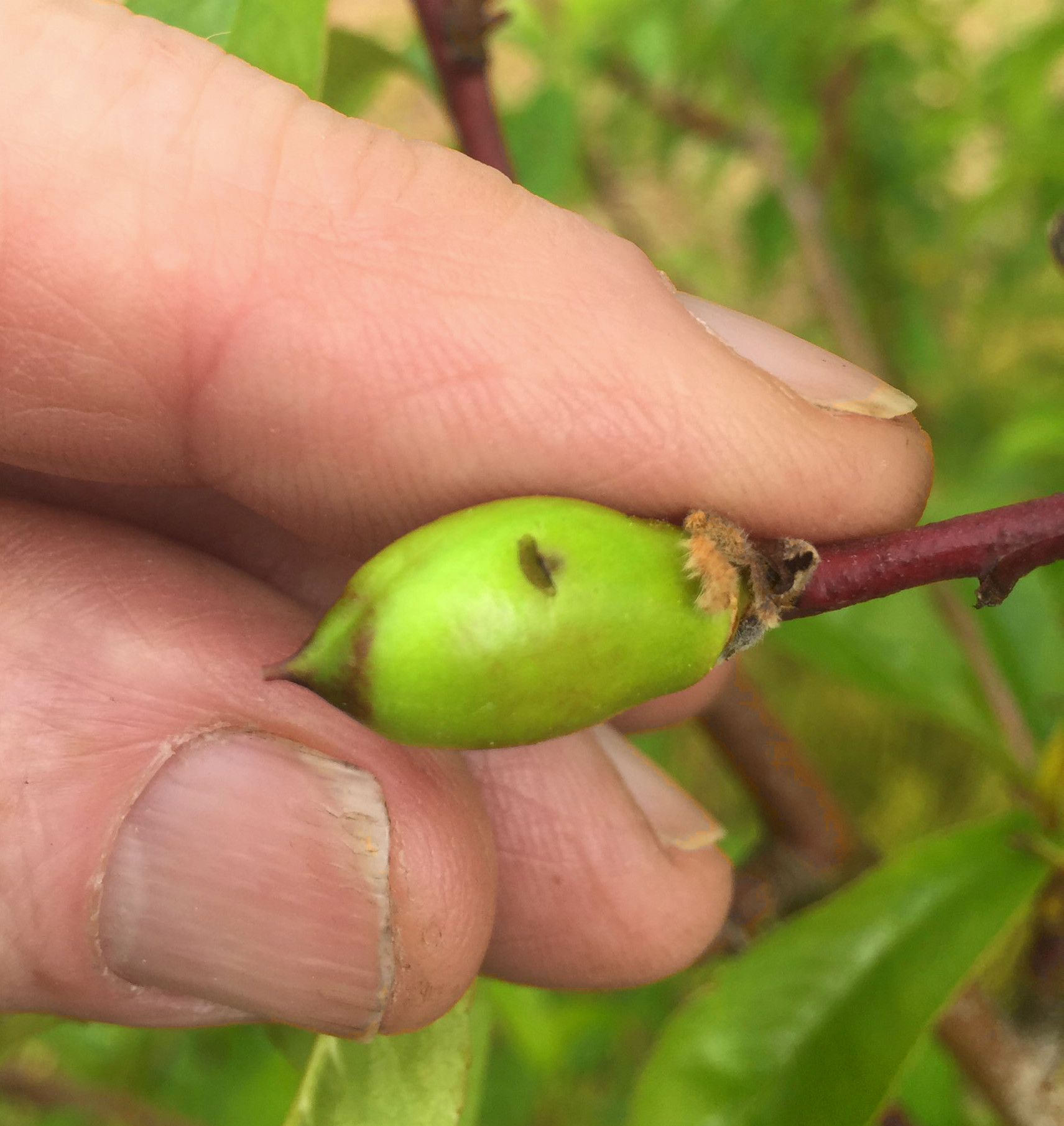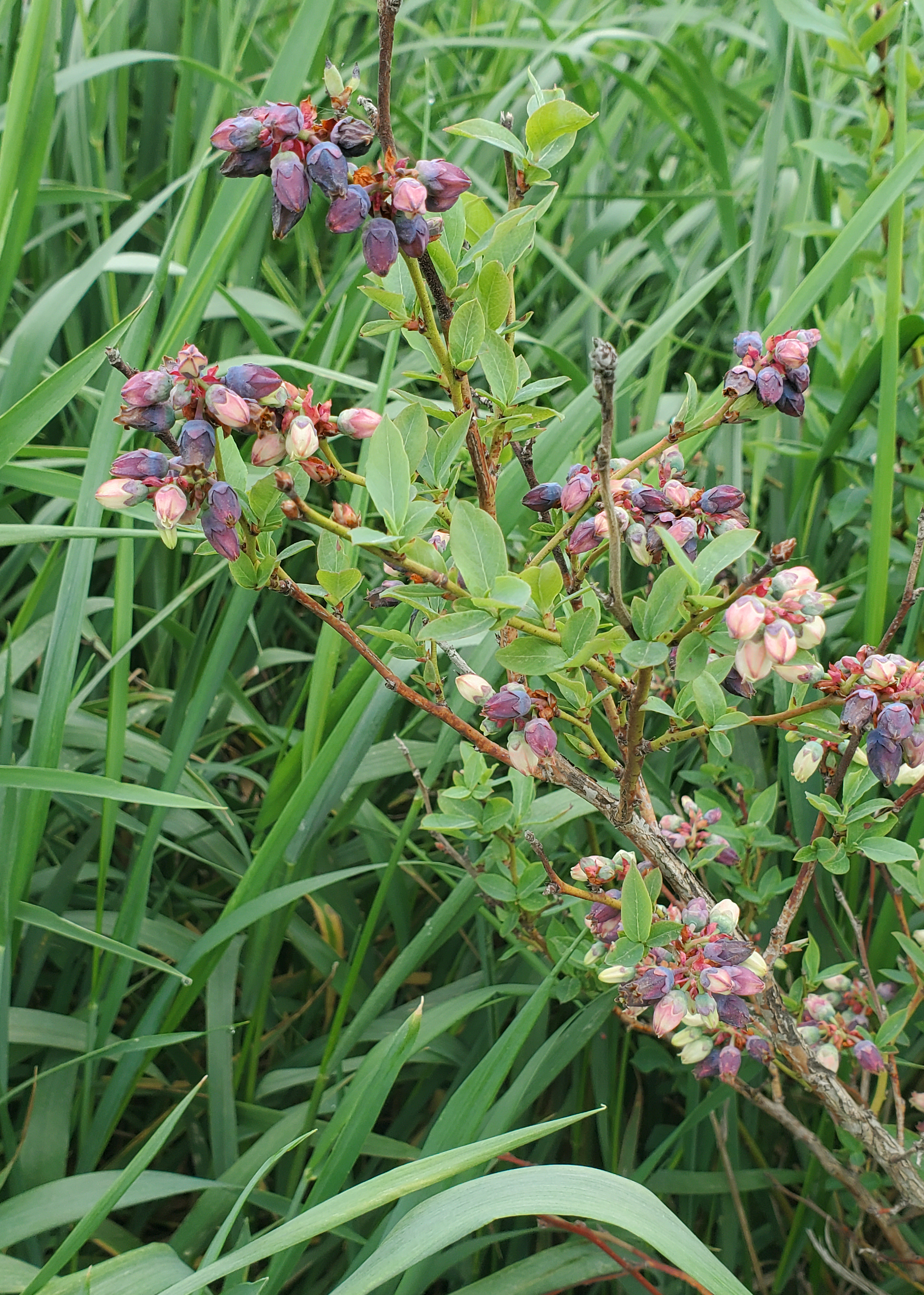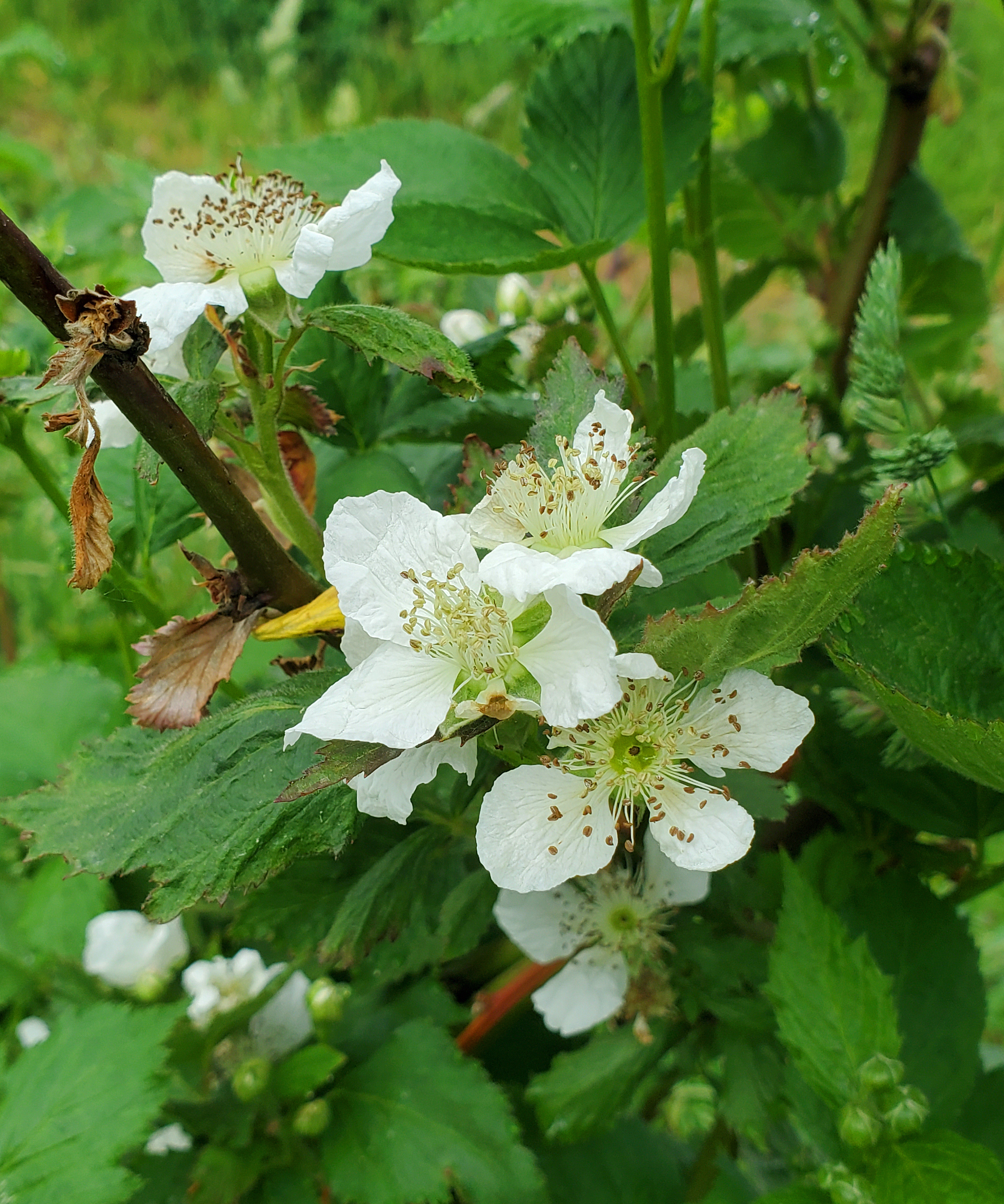Southwest Michigan fruit update – May 25, 2021
With the warm weather came rapid fruit development. Water stress is showing up as a result of the lack of rain in southwest Michigan.

Weather
Last week was warm. High temperatures at the start of the week were in the mid-70s and climbed into the upper 80s by the weekend. Lows were in the mid- to upper-60s. No rain was recorded. We are still at around 4 inches for the year. This is 20-25% of normal by this time of year. At this time, most of lower Michigan is in a D1 level drought. Portions of Van Buren and all of Allegan counties and areas further north and east are in a D2 (Severe) drought condition.
This week should see a cool off. Highs will be in the 60s, rising to 70 by the start of next week. Lows will drop to the mid- to upper-40s by Thursday. Rain is expected on Wednesday and Friday.
Soils are dry. Soil temperatures are above 70 degrees. With the heat, we picked up a lot off growing degree days (GDD) last week: 193 GDD base 42 and 138 GDD base 50.
|
Southwest Michigan GDD summary from March 1 - May 23, 2021 | |||
|---|---|---|---|
|
Station |
GDD 42 F |
GDD 45 F |
GDD 50 F |
|
Benton Harbor (SWMREC) |
759 |
613 |
419 |
|
Lawton (Lawton) |
779 |
630 |
425 |
|
Fennville (TNRC) |
651 |
517 |
343 |
|
Average for the SW region |
751 |
607 |
410 |
|
Average last week |
558 |
434 |
272 |
Tree fruit
Hot weather and dry conditions are putting stress on young plantings and sandy sites. Leaves damaged by frost are starting to turn yellow and drop. Rainfall since May 1 has totaled 0.2 to 0.5 inches across the region and has hindered nitrogen uptake and slowed plant growth in sandy sites. Plum curculio feeding and egglaying scars are becoming easier to find. San Jose scale males began showing up in the Trevor Nichols Research Center trapline this past week. Crawler emergence is predicted in a few weeks, depending on the upcoming temperatures.
Periodical cicada appearance has been in the regional and national news lately. This insect has the potential to be found in parts of Michigan but is not expected to be an issue for growers.
Apricots are 22-25 millimeters, and pit hardening has begun. The crop looks to be very good at some sites and poor at others. Plum curculio is a concern with the warm evenings. Bacterial spot is sometimes a problem on susceptible varieties. Copper is about the only bactericide labeled for apricot, and most labels do not support post bloom use.
Peach and nectarine have sized up quickly over the past week. They are generally 15 millimeters or larger. More small fruit are dropping. Bacterial spot treatments should shift away from copper to oxytetracycline mycoshield to avoid damage to fruit. Oriental fruit moth catches are still high but falling. This first generation oriental fruit moth targets tender shoot tips of peach, and to a lesser extent, apple shoots. No flagging by oriental fruit moth has been reported yet.
Tarnished plant bug and plum curculio are a concern now that fruit are a little larger. Small amounts of peach leaf curl symptoms showed up over the past week.

In cherries, tarts are 10-12 millimeters. Sweet cherries are still 10-14 millimeters, but the pit has hardened off. They should begin increasing in size again soon. Cherry leaf spot infection periods have been infrequent lately due to relatively short wetting periods. Plum curculio feeding and egglaying scars are becoming easier to find.
In plums, Japanese plums are 15-18 millimeters. European plums are 15 millimeters. Japanese plum crop prospects look OK, European plum crop looks good in some sites, poor in others. Black knot control is still ongoing until terminal growth slows. Plum curculio damage is appearing on fruit.
Apples range from 13-20 millimeters diameter fruit. Fruit thinners applied last week were effective due to the heat and cloudy skies that reduced tree carbohydrate reserves. May 3 was a predicted fire blight infection for the area and symptoms were predicted to start showing last Friday for the central Berrien County region.
Codling moth catch is increasing. The Enviroweather model biofix for codling moth was around May 1 for the region, but temperatures were too cold for mating flights. The warmer weather on May 15 and 16 was much better for flight and should be used as biofix for most areas. Egg hatch should begin this week. Fruits are big enough to now be a target for plum curculio.
Recent apple scab infection events have been few. Scab symptoms were detected over the past week. Scab ascospore catches are expected to be still significant for the next few weeks.
Pears are at approximately 15 millimeters diameter. Fruit thinning treatments were generally effective this past week. Pear fruit are generally too hard to be a target for first generation codling moth. Plum curculio and tarnished plant bug can target pears at this stage. Pear psylla populations are increasing. and scab is still a threat.
Small fruit
Grapes that were not impacted by the radiation freezes the first week of May have 10-18 inches of shoot growth and the flower clusters are expanded. Secondary shoots are beginning to grow on freeze damaged vines.
Wild grape bloom was seen in Berrien County, but is not yet widespread. Wild grape bloom is used as a biofix for grape berry moth. Scout for wild grape bloom on your farm. Biofix is when 50% of clusters are at 50% bloom. Grapes in good sites are getting close to bloom. Phomopsis and Black rot sprays are the focus just before bloom.
Blueberry bloom continues. Flowers are most susceptible to both mummy berry infection and pollination soon after opening and susceptibility declines after that. Towards the end of bloom, disease control refocuses on both mummy berry infections on late bloom and anthracnose infections to young green fruit. Applications of pesticides during bloom should be done in the early morning or at night when bees are unlikely to be foraging. Bees can carry pesticides back to the hive.
Examine fields for freeze injury from recent freezes. Freeze damage is spotty. Many fields look good but some have various levels of injury. In fields that did not run water to protect from freeze damage, the soils are extremely dry. Check the irrigation systems and water. Even with the rains coming up this week, the soils will still be in a deficit without supplemental water.
Using the Enviroweather model, cherry fruitworm biofix should have occurred last week, but no moths have been captured in monitoring traps yet. Cranberry fruitworm flight has begun. Male cranberry fruitworm were caught in traplines over the weekend. Biofix for these pests is first flight or trap catch. Management begins when egglaying begins, which is one to two weeks away.

Strawberry bloom continues. Fruits are developing. With bloom and bee activity, do not use insecticides. As bloom ends, consider sprays to protect against tarnished plant bug and flower thrips.
Bramble flower buds are expanding. Bloom has begun in some varieties. Scout for leaf feeding insects such as leafrollers and sawflies. Do not apply insecticides during bloom.

Miscellaneous crops
Currant berries are sizing. Some varieties are almost full size.
Gooseberries are continuing to green up. Fruits are up to 10 millimeters in size.
Hops stringing is finishing. Training is continuing this week. With the dry soils, irrigation is being used to increase shoot length ahead of training.
Chestnut catkins are developing. Early leaves are full size.
Hazelnut shoots are continuing to lengthen. Early season leaf weevils create small holes in leaves this time of year. This can be an issue for young, first-year plantings, but not a concern for mature trees.
Pawpaw flowers are open. Leaves are continuing to emerge.
Upcoming meetings
Our regular Southwest Michigan Monday Fruit IPM Updates are available online. You need to register to receive the Zoom link and password for these meetings. The webinars are free and one pesticide applicator credit is available for each meeting. We had over 70 growers attending our Monday meetings last year.
A prebloom grape meeting is scheduled for Thursday, May 27, from 1 to 4 p.m. Register here. This meeting is good for three RUP credits.
Related articles
- Using Enviro-weather’s regional overnight temperature report during cold events
- Mummy berry has returned, and new products are available for control
- Frost, Critical Temperatures, and Frost Protection
- What can fruit growers do if a freeze is coming?
- Michigan grape scouting report – May 19, 2021
- Periodical cicadas are emerging: Should Michigan fruit growers be concerned?



 Print
Print Email
Email